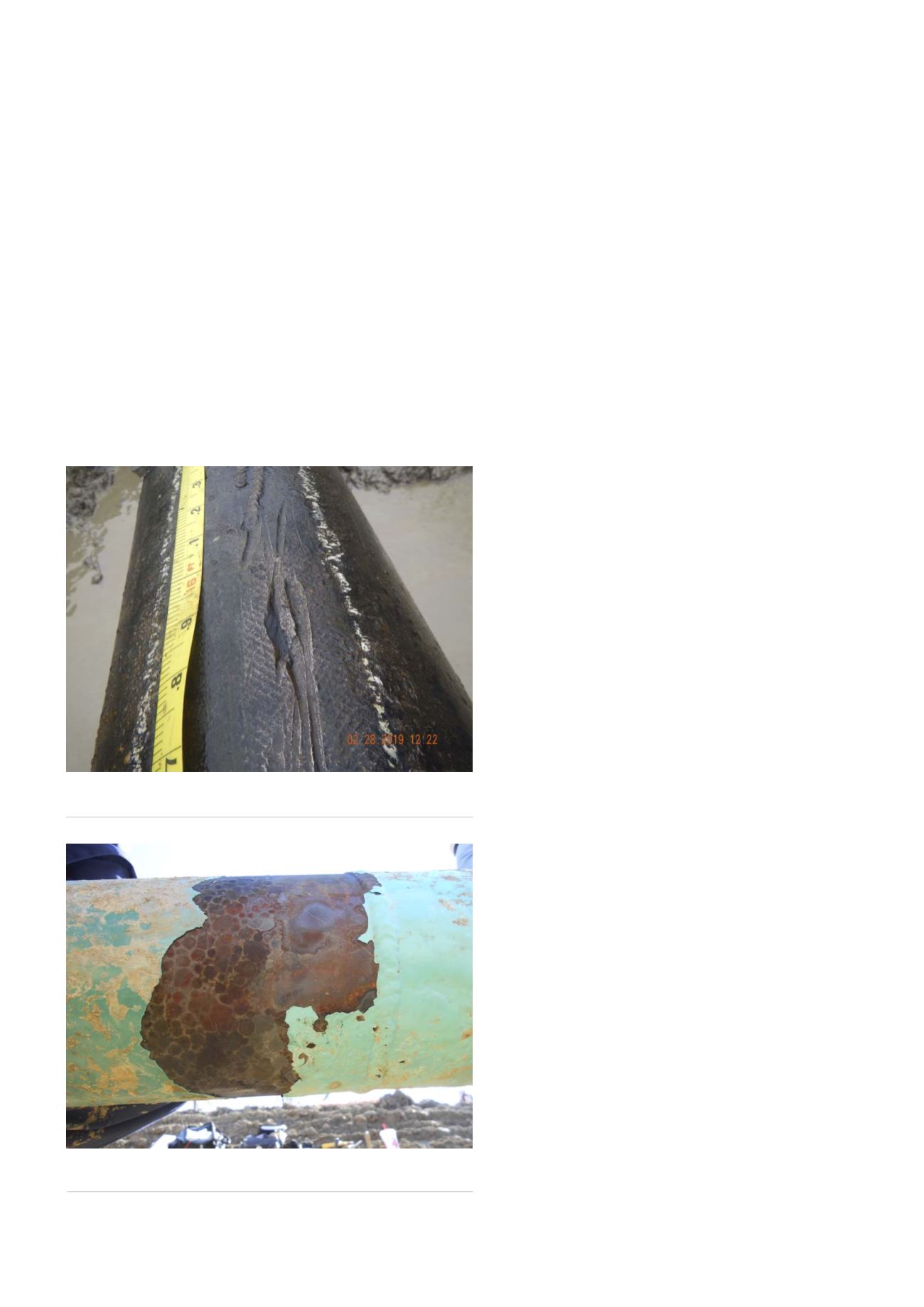
integrity assessment tool for regulated pipelines, primarily
utilised for pipelines unable to undergo inline inspection or
be pressure tested.
In simple terms, ECDA is a scientific approach to
evaluate external corrosion threats. It is used to find areas
where corrosion has already taken place, and can also
assist with proactively identifying areas where corrosion
is likely to occur. While this process is generally used for
US regulated pipelines as a means of integrity assessment,
it can also be utilised for unregulated pipelines and other
steel structures. The standard developed by NACE is a
comprehensive process, and when employed on regulated
pipelines should be utilised in its entirety. However, for
unregulated pipelines, the process can be customised to
the specific pipeline or project in question.
The following discusses the ECDA process and how it
can be utilised in an unregulated situation. The four steps
included are pre-assessment, indirect inspection, direct
examination, and post-assessment.
Pre-assessment
Pre-assessments determine the feasibility of the ECDA
process, select the most appropriate indirect inspection
tools, and identify and define ECDA regions. This involves
the following activities:
)
Collecting and analysing current and historical
data pertinent to external corrosion such as pipe
information, construction practices, soil and
environmental conditions, corrosion control practices,
and operational practices and history.
)
Defining and identifying ECDA regions. An ECDA region
is a portion or portions of a pipeline that have similar
characteristics, corrosion histories, and corrosion
probabilities that can be inspected utilising the same
indirect inspection tools.
)
Assessing ECDA feasibility.
)
Selecting indirect inspection tools.
Indirect inspection
Indirect inspections identify and define the severity
of coating faults, identify CP deficiencies, and identify
locations where external corrosion activity may have
occurred or may be occurring.
This is achieved by performing above-grade surveys
on the pipeline in question. The most commonly utilised
surveys include:
)
Coating attenuation survey – alternating current,
current attenuation (ACCA) with depth-of-cover.
)
Coating holiday detection – direct current or
alternating current voltage gradient (DCVG or ACVG).
)
Cathodic protection system performance – interrupted
close interval potential survey (CIS or CIPS).
Survey quality is critical to the success of the project.
Poor quality surveys can miss significant defects or over-
report them, leading to incorrect budget decisions. When
selecting a survey provider, it is important to ask for
examples of previous work and references to make sure
they can provide a quality service.
Aligning the above-grade surveys and taking the pre-
assessment study into consideration would direct the next
phase of the study to specific locations on the pipeline or
asset where corrosion has occurred or may be occurring.
Direct examination
Direct examinations determine which indications are the
most severe and collect data to assess coating damage
and external corrosion activity. Activities include:
)
Prioritising the indications found during the indirect
inspection step.
Figure 2.
Coating and corrosion damage on a high-pressure gas
transmission pipeline.
Figure 1.
Third-party damage discovered utilising CIS/DCVG and
excavation.
80
World Pipelines
/
MARCH 2020








